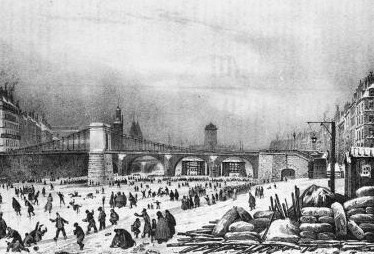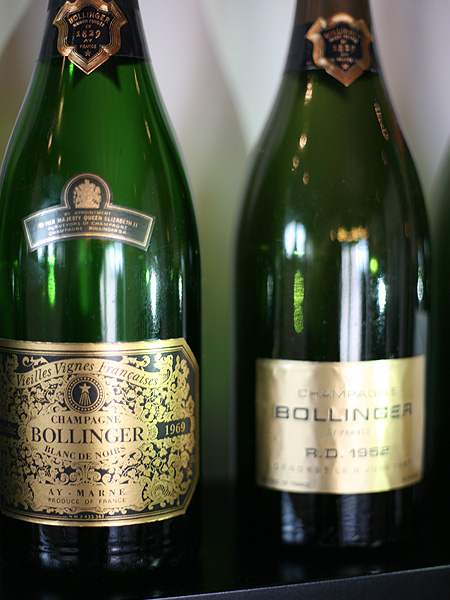What does a Champagne taste like when it’s 186 years old?
It likely depends on where it was stored. Perhaps a bottle recovered from a wreck, where it had been buried at the bottom of the sea for more than a century, might be in better condition than one lost in a collector’s cellar. Odds are that a wine found in the cellar where it was made would be in optimal condition, not having moved in those 186 years.


(Image courtesy of Getty Images.)
In 2010, the company began a review and preservation of the archive. “We also felt there were a number of wines we were losing,” says Jérôme Philipon, chairman and CEO of Bollinger, speaking of the vast stocks lining the firm’s tunnels underneath a hillside in Aÿ. “We had carried out a restoration of the wines under Christian Bizot [longtime chairman of the firm] in the 1970s. But since then, they had been left untouched. So we started a sorting-out campaign for all wines in all places in the cellars.
“When we were doing inventory, we decided to clean up a cellar walled off by empty bottles. We thought there was nothing behind them.” A worker removed several layers of those empty bottles from an archway and discovered a stash of ancient bottles in an alcove.
“We have been coding wines since the beginning, so we could identify most of them. We found a box of 52 or 53 bottles coded CB14, the code for 1830. They were the foundation bottles.”
In all, the team was able to identify wines from 65 vintages and Bollinger set out to establish a wine library in a portion of their cellars, the Galerie 1829. “The six hundred bottles we found had not been disgorged. In the end, we lost about fifty percent of them. We tasted every bottle of the 53 from 1830 and threw away all the bottles that were corked or mushroomy. That left us with 13.”
In June, Bollinger inaugurated the Galerie 1829 as well as La Reserve, a second gallery that features 45 vintages of Bollinger’s reserve wines cellared in magnum, including vintages back to the 19th century. To celebrate, they opened a range of wines, including the first Vieilles Vignes Française, their rare Champagne from two small plots of ungrafted vines. Lily Bollinger created Vieilles Vignes Française in 1969, at the suggestion of Cyril Ray, a British writer, who thought it would be interesting to produce a wine solely from those pinot noir vines on their own roots. The wine is still tightly structured, with an unspoken tension to its mature flavors, soft and gentle to the touch.


In addition to the concentrated 1945, the firm presented several pre-war vintages, including the bright and zesty 1937, with a gentle, lasting savor of fresh oranges. “It was a rainy season, with a big overflow of the Seine River—so maybe 2016 will be good,” Philipon noted.
The wine from the low-yielding vintage of 1914 was still floral, with brisk, bright sunny energy, an antidote to a continent immersed in the First World War. Its notes of allspice and cardamom set it apart from other wines presented at the event.
The 1937 and the 1914 have the energy of the 2002, with unalloyed freshness that has encouraged their resistance to oxidation.
That was not the case with the 1830, from bottles that were half full when they were disgorged in 2014. The team finished them without adding dosage, only a little sulfur to protect the wine. “We don’t use sulfur at disgorgement,” cellarmaster Gilles Descôtes explained. “So it pained us to do so.”
Perhaps it took a moment for the sulfur to blow off the wine, though it did not smell of sulfur. The initial scent was mushrooms, the wine broad, luscious and a little tired. After five minutes, it began to open up, suddenly refreshed, hinting at toasted bread, the flavors spicy and bright, with tenderness to the texture, as if there were something soulful in the glass. It hadn’t been preserved by alcohol, by fortification, or by resting under the sea. It was preserved by its freshness, if that is not a tautology. Or, as Julia Harding, MW, succinctly noted, “Wow.”
Sotheby’s will present “A Century of Champagne Bollinger” on Saturday, November 19, 2016, in New York City. The auction will feature the 1914 wine along with an opportunity to visit Bollinger’s Galerie 1829. The sale also includes five vintages of Vieilles Vignes Française and 35 lots of R.D.
This is a W&S web exclusive feature.
Joshua Greene is the editor and publisher of Wine & Spirits magazine.
This is a W&S web exclusive. Get access to all of our feature stories by signing up today.
















